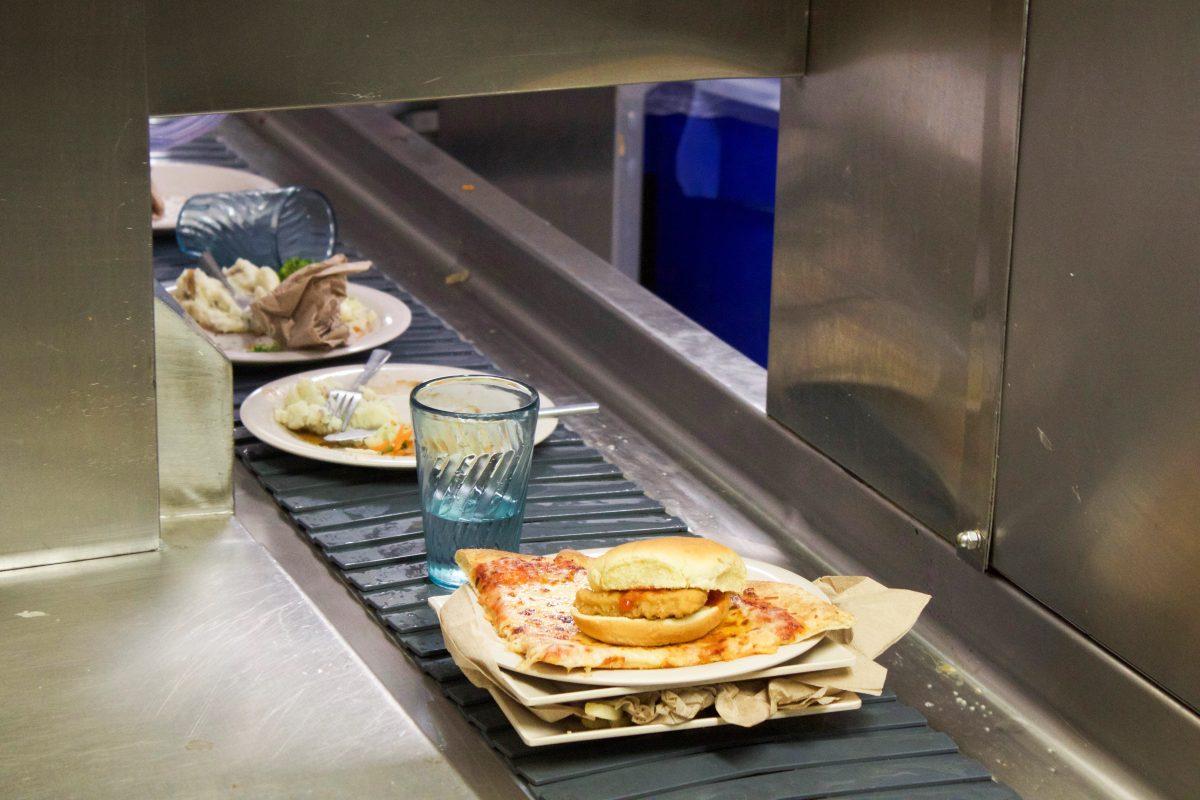Hundreds of pounds of food in Campion Student Center end up in the trash every month.
Some of that waste comes from production— the unused nub of a carrot or the bone of a chicken that is tossed— or from food that is prepared but not used.
At the Saxbys in Campion, employees are instructed to dump unused coffee every two hours. Uneaten bagels and pastries are thrown out at the end of the day although employees are allowed to take the extras home.
A lot of food waste on campus, though, is a result of diners taking food they end up not eating. Experts refer to that as “plate waste.”
Tate Fryczynski ’22 said he typically takes more food in the Campion Dining Hall than he winds up eating.
“Sometimes, I’ll even take a second helping and then realize I can’t finish it, so I will leave about one-fourth of my food uneaten,” Fryczynski said. “This happens at least once in my three meals a day at Campion.”
Overall, the U.S. has a food waste problem, with about 40 percent of all usable food being thrown out, according to the to the Food and Agriculture Organization, a United Nations agency.
At St. Joe’s, reducing waste caused by the overproduction of food is done through the tracking of portions served in previous menu cycles, explained Ken Goldbach, general manager of SJU Dining Services.
“We plan how many portions [to make] based on historical data,” Goldbach said. “We track all that and put that back within our system so the next time these cycle menus come around, we are producing as accurately as possible.”
Goldbach described the amount of waste accumulated in the production process at St. Joe’s as “minimal,” about 985 pounds per month. That’s out of about 60,000 total pounds of food produced each month, he estimated.
For food that gets made but not taken by diners, the campus Food Recovery Network collects and redistributes Campion food to My Brother’s House, a Philadelphia shelter, three times a week. Last year, the group redistributed 371 pounds of food, according to Aleena Bobadilla ’19, president of the student-run group.
“Aramark tends to be very efficient with how much they cook, so thankfully, there isn’t a lot of food waste on campus,” Bobadilla said. “This semester, it’s come to a point that we’ve had to cancel most Mondays.”
Getting unused food to organizations and individuals who can benefit from it can be a challenge, though, in part because donors worry about liability.
Pennsylvania’s Donated Food Limited Liability Act, which was enacted in 1981 and amended in 1996, was created to encourage food donation. The act protects donors from liability as long as the donor reasonably inspects the food before giving it away and does not donate any canned goods that are rusted, leaking, swollen or defective.
At the federal level, the Bill Emerson Good Samaritan Act was passed in 1996 to encourage the donation of food to nonprofit agencies, limiting donor liability.
“We try to educate people about the federal and state Good Samaritan laws that protect donors in all cases except willful, gross negligence,” said James Dodaro, president of Bucks County Food Runners, a nonprofit that redirects food that would otherwise be wasted to people in the Bucks County area who are food insecure. Bucks County Food Runners rescues over 20 tons of food a year.
At St. Joe’s, it’s post-consumer waste, the throwing away of food once it’s been on someone’s plate, that can be reduced, Goldbach said.
“We do plate service. We don’t do trays,” Goldbach said. “You can eat as much as you want, but we only want you to take what you’re going to eat.”
Ultimately, though, how much edible food is thrown away post-consumer comes down to the person eating.
Laura Frank, Ph.D., the director of the Didactic Program in Nutrition at LaSalle University, also volunteers for and promotes Hungry Harvest, a Philadelphia-area food recovery service with the aim of ending food waste and hunger.
“We’ve found that students throw away food either because they take/are served more than they want to eat, or that they are disappointed with the temperature, texture and/or taste,” Frank said. “They have stated that they are willing to think more about the portions they take to reduce waste.”
Intentionality behind how much food a person takes, and then wastes, is the root of the problem, according to Dorado.
“There is more than enough food in this world to provide every single person with over five pounds of food a day,” Dodaro said. “That means there is not a food production problem. There is a food distribution problem.”














































